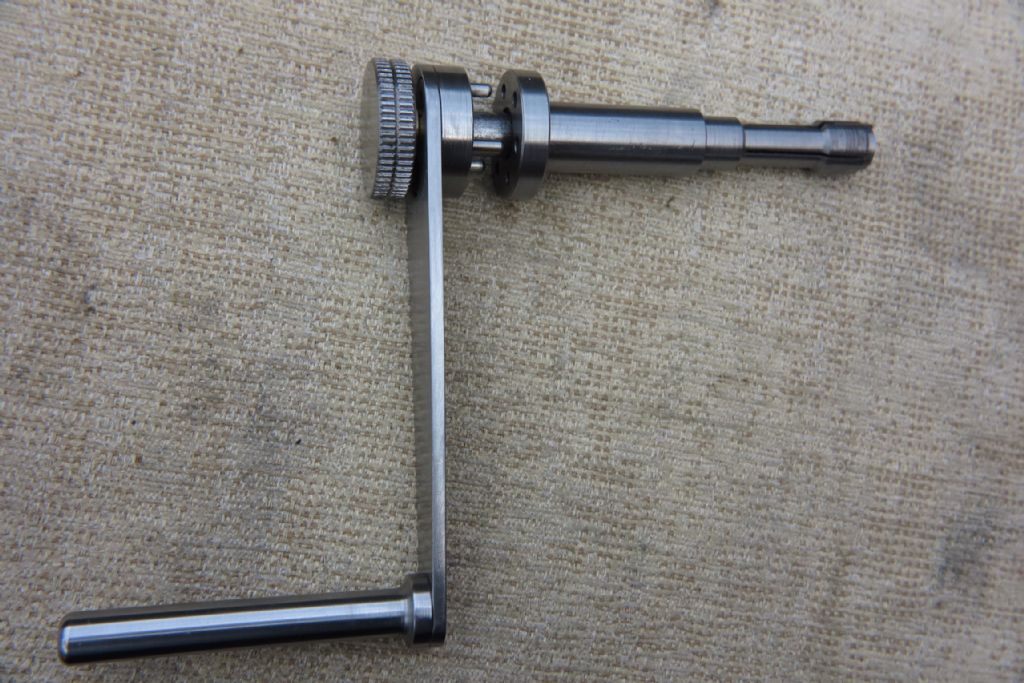Posted by Nigel McBurney 1 on 28/03/2021 09:39:53:
Ok a steering wheel is better /safer than a handle,a disc of aluminium with a round rim and recessed in the centre,with no holes or spokes would be safer.some larger lathes had 5c collet tubes with a round disc to tighten the collets and these could be safe when operating/rotating under power, I would have thought that care would have to be taken with a steering wheel as this could put a lot of torque on the tap,which can then put too much torque on the tailstock,the Myford tailstock barrel has only a small key to prevent rotation and the jacobs chuck relies on just the morse taper ,damage this taper and the machine is no longer an accurate centre lathe. Larger taps than BA or 1/4 whit can be held in place with a spring loaded centre and held on the flats with a spanner,Every time I use the S7 to tap a small hole I always curse and have to rotate the chuck by hand,a reversing motor would take just as long as the motor has to be switched off ,come to a standstill then started in reverse,The ideal situation would be a pair of clutches on the Myford to give near instant forward /reverse,in olden days when lathes with flat belts had the line shaft overhead,with power off the belt could be grabbed and pulled either up or down to give instant forward /or reverse.
I’m not sure how I could damage anything by excess torque. I’m using a tailstock die holder with a hand lever to stop rotation. For taps I’m using a spring centre in conjunction with either a hand tap holder (the one with a chuck), or a tap wrench. For very small taps I’m using a pin drill chuck, held so it rotates freely in a tailstock chuck. I put a small bar through to hold it from rotating. ETA I’m only using small taps and dies for model steam engines: 8BA up to M10 kind of size occasionally for other random projects. I’m not wanting or hoping to apply high torques here.
None of the above transfers any torque to the tailstock. There might be more torque, but I think there’s also more control because your hand is always applying load downwards in the same area rather than your arm stretching while moving in a circle.
When hand threading with a tap or die I’m constantly backing off the tool every half turn or so to break the chips, and the wheel is ideal for that.
If I want to reverse the leadscrew when screwcutting (with the saddle engaged), I can just put a finger against a spoke and it spins freely and rapidly backwards with very little effort because there’s no heavy lump of unbalanced handle deal with.
If I accidentally started the lathe with it fitted, to injure myself I’d have to: 1) not notice the wheel was spinning and 2) put my arm through the spokes ie in a motion longitudinal to the lathe axis. I genuinely can’t see any risk of that whatsoever. With an unbalanced handle spinning around there’s a far higher volume where you could get seriously hurt.
I’m not suggesting anyone goes out and buys a steering wheel to make a hand turning device, just that this is what I’ve done with an unused thing I had around, to make something I needed. I’ve seen some people use old bike cranks, but to me they don’t save much machining time and look a bit naff. It cost me nothing to make a shaft for the wheel, and gave me some much needed practice in milling, turning and thread cutting. It works well, and it’s still what I think is a nice display item in the garage – just as it was previously hanging on the wall. At the end of the day, I can unscrew two grub screws and a lock ring and it’s an untouched steering wheel again. That’s really all it is.
Edited By Dr_GMJN on 28/03/2021 11:23:18
Dr_GMJN.




















